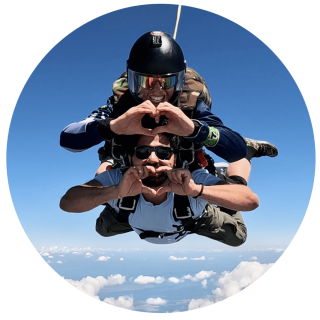Skydiving Glossary (Slang, Terminology)
DZ News
Posted by: Parachute Ottawa
9 months ago
If you’re about to go skydiving for the first time, you probably feel a bit overwhelmed by all there is to experience and learn. Jumping out of an airplane is enough of a feat on its own, but adding the mystique of skydiving terms into the mix can make you feel a bit more like a fish out of water.
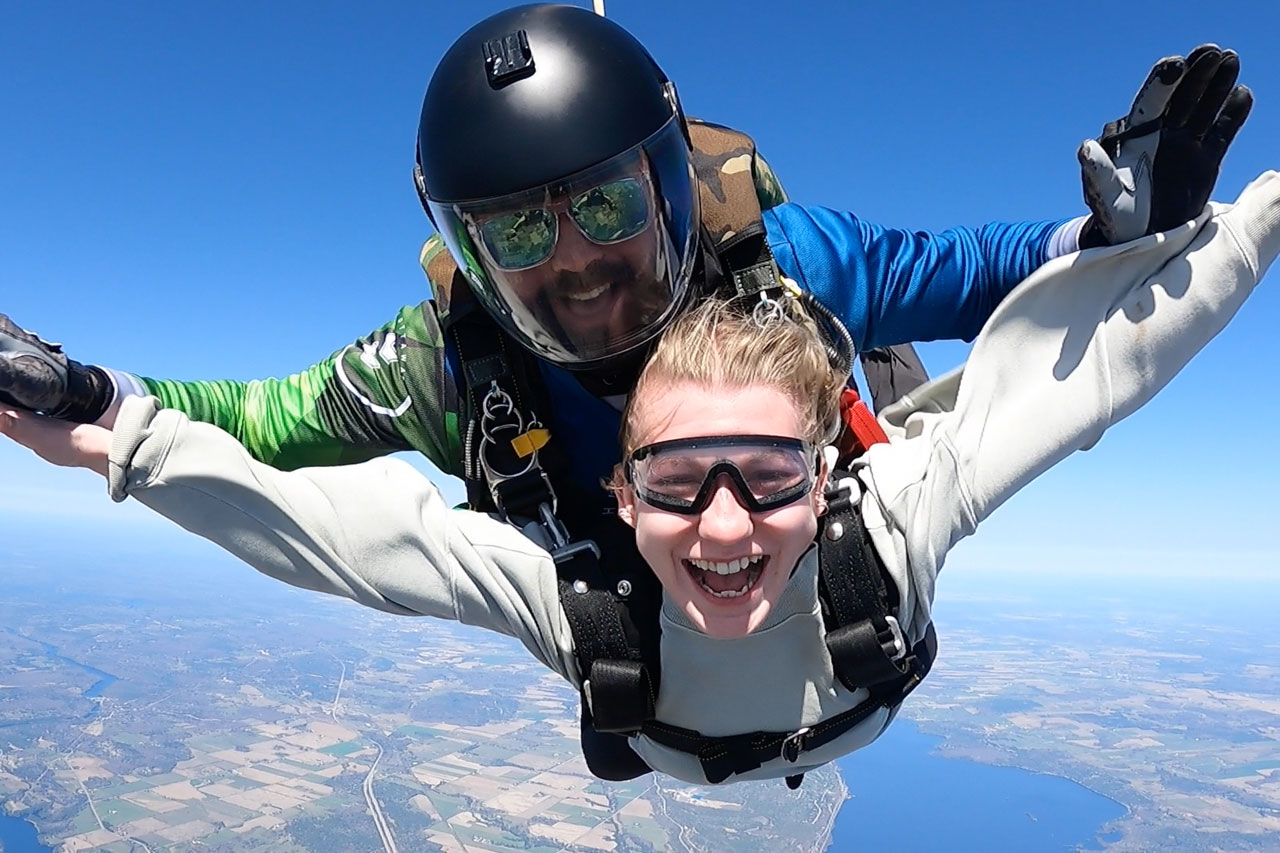
That’s why we’re here to go over all of the most common skydiving terminology used in the sport. Whether it’s official skydiving vocabulary or some good old fashioned skydiving slang, we’ve got you covered.
Read on to check out our comprehensive skydiving glossary so you can sound like a straight-up pro from the minute you step onto the dropzone!
Basic Skydiving Terms
- Burble – An area of dead air behind a skydiver created by their body blocking airflow as they fall through the sky.
- Canopy – A skydiver’s parachute. Canopies come in both main and reserve variations.
- Ceiling – The bottom of the lowest cloud layer in the sky. Skydivers aren’t allowed to jump through clouds, so this is the highest skydivers can exit from when there’s full cloud coverage.
- Current – You may hear skydivers talking about how “current” they are. This refers to how often they’re jumping/how long it’s been since their last jump. It’s important to stay as current as possible in order to mitigate risk. If uncurrent, you must take recurrency training.
- Dropzone (DZ) – The location where jump operations happen. This usually includes buildings, the runway, and landing area.
- Manifest – This term originated from the concept of a flight manifest, but today “manifest” is used as both a noun and verb. As a noun, “manifest” is the main office at the dropzone where you can book jumps, ask questions, and organize loads. As a verb, “manifest” is what you do to add yourself to the load sheet. So, you go to manifest (noun) in order to manifest (verb).
- Progressive Freefall (PFF) – This is the program that a skydiving student completes in order to earn their Solo Certificate. It involves intense, hands-on training with experienced instructors on both the ground and in the sky.
- Solo Certificate – This is the first Certificate that a jumper can get, and is essentially a learner’s permit. To earn your Solo Certificate, you must complete PFF. From here, novices progress to the A Certificate of Proficiency (CoP) and can jump anywhere in the world, and begin working toward other licenses or ratings.
Skydiving Equipment Terminology
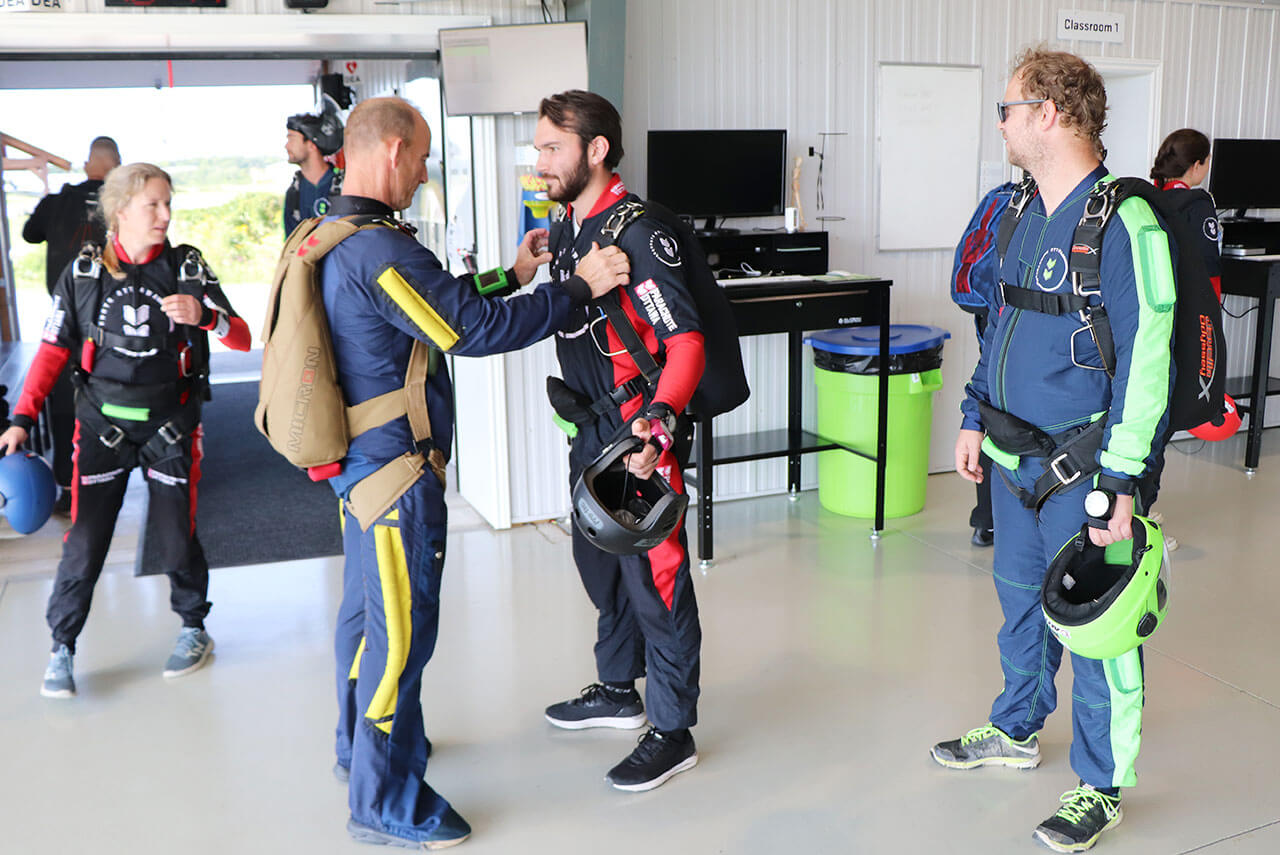
- Altimeter – An instrument that measures altitude through barometric pressure. These are usually worn on the wrist, and can come in analogue and digital versions. Some skydivers jump with an additional altimeter, either an audible or a visual one. Audible altimeters are worn in the helmet and beep at certain preset altitudes. Visual altimeters light up on the visor; an awesome option for the hearing impaired.
- Automatic Activation Device (AAD) – This little piece of technological genius has saved many lives over the decades since it was invented. An AAD is a small computer that measures speed and altitude, and will automatically deploy the reserve parachute if it senses the skydiver is traveling too fast, too low.
- Rig/Container – The pack skydivers wear on their back that holds their main and reserve parachutes, AAD, and all of their activation handles. The rig is worn using a harness system that attaches around the skydiver’s shoulders, chest, and legs.
- Rigger – A certified individual who is responsible for regularly repacking reserves and inspecting skydivers’ gear as required.
- Toggles – The lines/handles connected to the back edge of the parachute that allows the skydiver to steer and brake.
- Wingsuit – Often referred to as squirrel suits outside of skydiving, these special jumpsuits create wings under the wearer’s arms and between their legs, allowing them to glide long distances before deploying their parachute.
Jump Procedures and Techniques
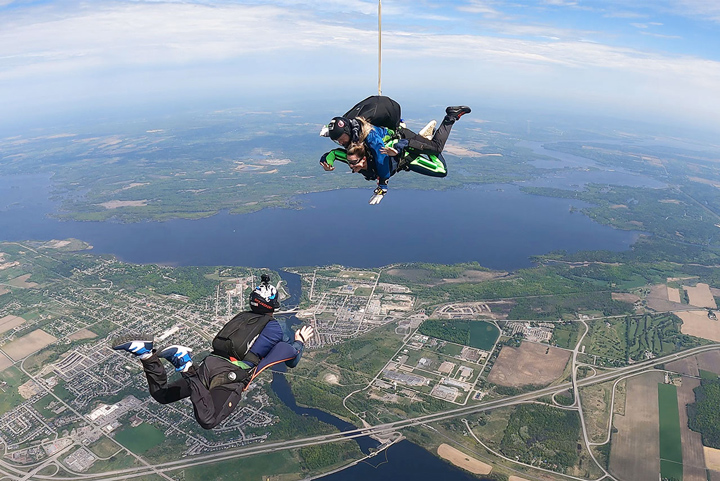
- Arch – The position that skydivers use in freefall to maintain stability. This is the most common position in skydiving and requires the jumper to fall on their belly with their arms and legs slightly back, like a banana.
- Deployment – The moment the parachute is extracted from the container so that it can open and begin to fly.
- Exit – The process of leaving the airplane door and transitioning to freefall. This is many skydivers’ favorite moment of the jump. Don’t forget to arch!
- Flare – The technique used to slow the parachute enough to land comfortably. A skydiver flares by pulling down on both toggles, which causes the parachute to slow and slightly lift, just like an airplane wing!
- Spot – This can be used as a noun or a verb. The noun version is the literal spot on the ground that skydivers plan to exit the airplane over in order to land where they want to land. The verb means to look out the airplane door before exiting to ensure you’re over that spot and the sky is clear below.
Skydiving Slang
- Boogie – A skydiving party! These usually consist of lots of jumping, professional organizers, guest jumpers, and post-jump parties.
- Chop – Another word for cutting away the main parachute in order to deploy the reserve during a malfunction
- Malfunction (Mal) – This is when something is wrong with the main parachute and it needs to be fixed or cutaway. Sometimes malfunctions can be solved in-air, and other times the main needs to be cutaway so that the reserve parachute can take over.
- Whuffo – A non-skydiver.
Advanced Terms
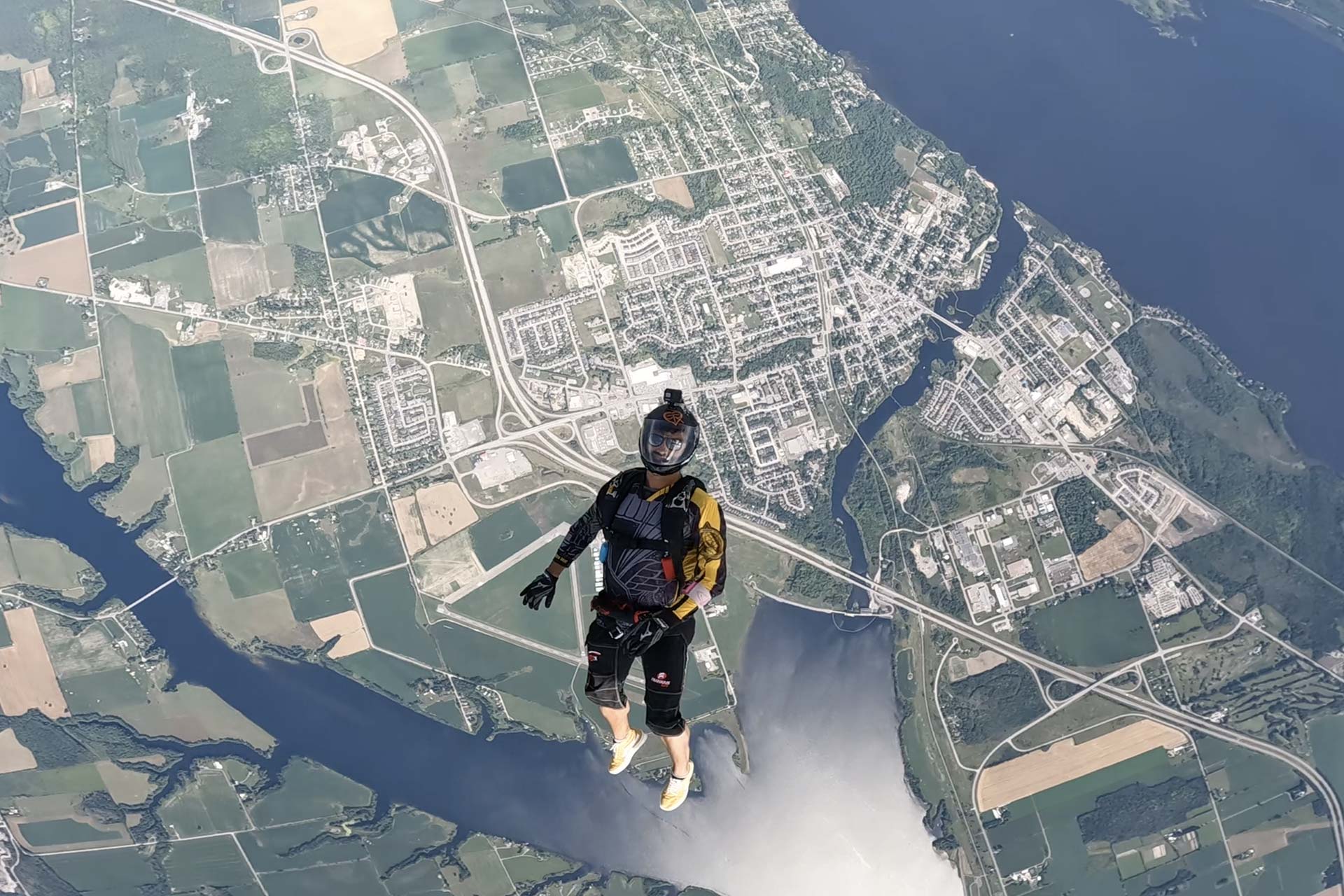
- Canopy Relative Work (CRW) – The discipline of creating formations in the sky with multiple parachutes. Multiple skydivers can fly their parachutes close together or even linked up to create larger shapes. Skydivers pronounce this as “crew.”
- Discipline – The word used to describe the different types of flying available in skydiving. Many skydivers will practice several different disciplines, while others will focus on one or two and achieve professional status.
- Relative Work (RW) – The oldest form of skydiving, RW is the discipline most often seen in videos or on posters. This is when skydivers fly their bodies into large formations, often holding hands or other body parts to create shapes.
- Freefly – A newer discipline that includes flying vertically, which creates much faster freefall speeds and various opportunities for additional formation shapes. Bonus terms: sit fly (to fly as if sitting in a chair) and head down (to fly vertically on your head).
Safety Terms
- Cutaway – When a skydiver has to detach their main parachute (due to a malfunction). This results in the deployment of the reserve parachute.
- Dropzone Safety Officer (DZSO) – The experienced skydiver or instructor at the dropzone who is designated to oversee all safety decisions and training operations.
- Emergency Procedures (EPs) – The preset procedures that are used in the event of a malfunction or other issue. Skydivers study and practice these repeatedly throughout their career. They include airplane freefall, and canopy emergencies.
Common Acronyms
- CARs: Canadian Aviation Regulations – The laws and regulations that govern all aviation, including skydiving, in Canada.
- CSPA: Canadian Sport Parachuting Association – The organization that oversees all skydiving operations in Canada. The CSPA sets rules and regulations, awards CoPs and instructor ratings, and advocates on behalf of dropzones and skydivers throughout Canada.
- PLF: Parachute Landing Fall – The technique skydivers use to absorb the shock of landing. This includes rolling through the momentum on the softer parts of the body to avoid injury.
- PIMs: Parachute Instruction Manuals – The rulebooks of skydiving.
Are you ready to get fluent in skydiver? Come jump with us and learn our language! Blue skies! (Oh – that’s a skydiving salutation for, “I hope you have perfect skydiving weather!”)
Categories:
You May Be Interested In:
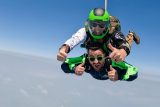
Skydiving Age Limit: How Old Do You Have to Be to Go Skydiving?
3 weeks ago by Thu Thi
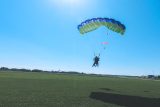
How Do Skydivers Know Where to Land?
2 months ago by Parachute Ottawa
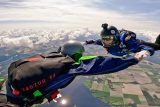
Understanding the Skydiving Student Program Pathway
2 months ago by Parachute Ottawa
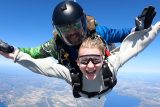
Skydiving Anxiety and How You Can Prepare
4 months ago by Parachute Ottawa
